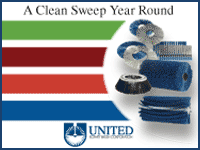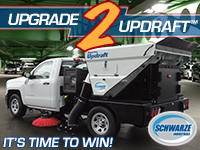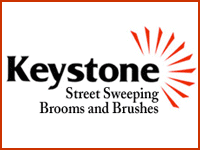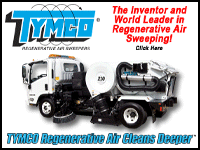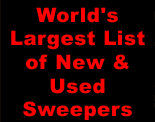
by Ranger Kidwell-Ross, editor
WorldSweeper.com
Fuel Price Declines Should Bode Well for Power Sweeping Industry
As I write this editorial, the price of oil has fallen by nearly half in just the last six months. Today, the price of a barrel of oil is under $56, as compared to last summer's peak pricing of $107 a barrel. Right now, the cost of fuel is lower than at any time since the spring of 2009 when the US was still in a recession.
This steep and unexpected plunge has producers concerned, economists disagreeing over whether this is a good thing or a bad thing for the economy – and power sweeping contractors rejoicing all the way to the bank. The good news for contractors isn't yet over: Although the national average price for fuel has fallen for almost three months straight and is currently at its lowest level since October of 2009, some analysts expect lower prices to continue through 2015.
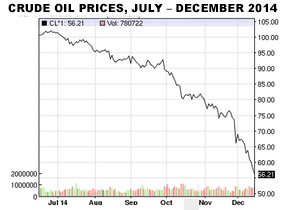 Sweeping contractors have long been negatively affected by the historical increases in the cost of gasoline and diesel fuel. Although many have tried to assess surcharges on customers, this approach is at best a Band-Aid and, at worst, something that has caused customers to switch providers and/or reduce sweeping hours.
Sweeping contractors have long been negatively affected by the historical increases in the cost of gasoline and diesel fuel. Although many have tried to assess surcharges on customers, this approach is at best a Band-Aid and, at worst, something that has caused customers to switch providers and/or reduce sweeping hours.
Good news that it is, falling prices at the pump will also usher in a tricky era for contractors, who will be assessing how and when to reduce their previous surcharges; and, by how much. Before you do anything else, first 'run the numbers.' Figure out how much the increase in fuel prices cost you over the last couple of years. Before you drop your surcharges, try to make up whatever money you lost so you can at least break even in that area of your pricing structure.
When you contact your customers with the 'good news,' you may want to share some of that historical pricing information with them, so they'll become more aware of the impact the last few years of high fuel prices have had on your operation – and their cost of sweeping. If nothing else, this will help make them less likely to treat your company and the services you offer as a commodity. Good communication also lets them know that you're considering their welfare, as well as your own, as you partner together into the future.
If you have any news of potential interest to the power sweeping community, please let us know. Between this publication, the WorldSweeper.com website, and the World Sweeping Association, we'll be sure to get the information passed along to interested readers.
Good Sweeping,

Editor, WorldSweeper.com
Executive Director, World Sweeping Association
PS If you haven't 'liked' our WorldSweeper Facebook page, what are you waiting for? That's where we offer industry previews and updates on an ongoing basis.
December Newsletter Contents
(Scroll down to read stories or click on links.)
- Les Hulicsko, Inventor of Sweeprite Sweepers and More, Retires
- Key West Donates Old Street Sweeper to the Bahamas
- Ways to Eliminate Drag Shoe Scraping
- Featured Contractor: California's CAM Services has Developed a Client Base of 'Raving Fans'
- New Macedonian-Built Air Sweeper Produced Via Brako/BioStrada Partnership
- Unique 'Double Main Broom' Concept Designed in Germany, Licensed to China
- Not Exactly Sweeping: Street Cleaners in New York Have Help From Insect Garbage-Munchers
Les Hulicsko, Inventor of Sweeprite Sweepers and More, Retires
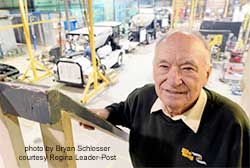 In the late 1970s Hungarian-born Les Hulicsko was cleaning parking lots in conjunction with his window cleaning business. The problem was, the machine he was using kept breaking down. So, as someone who had already invented a number of other types of commercial equipment, Hulicsko set about building a tow-behind machine he thought would do a better job. The sweepers, which could be towed behind even a tractor, utilized hydraulics to reduce moving parts. A total of 75 of the tow-behind sweepers were built, some of which, Hulicsko says, are still in use today.
In the late 1970s Hungarian-born Les Hulicsko was cleaning parking lots in conjunction with his window cleaning business. The problem was, the machine he was using kept breaking down. So, as someone who had already invented a number of other types of commercial equipment, Hulicsko set about building a tow-behind machine he thought would do a better job. The sweepers, which could be towed behind even a tractor, utilized hydraulics to reduce moving parts. A total of 75 of the tow-behind sweepers were built, some of which, Hulicsko says, are still in use today.
This first design, says Hulicsko, got him into the business of building self-propelled street sweepers. He founded Sweeprite Manufacturing in 1978 with two models, the Sweep-Rite 2400 and a slightly smaller machine, the Sweep-Rite 2200. Both were also outfitted with hydraulics, a radical design for the time though all sweepers employ extensive hydraulics today. He also invented a one-person pothole patcher today called the Python 5000. In 2012 his Regina, Saskatchewan Canada-based company was purchased by the combination of a venture capital firm and the Business Development Bank of Canada. Recently, the company was renamed SuperiorRoads Solutions. We invite you to learn more about the life and many inventions of Les Hulicsko through a recent article about him in the Regina Leader-Post.
Check out the information.
Key West Donates Old Street Sweeper to the Bahamas
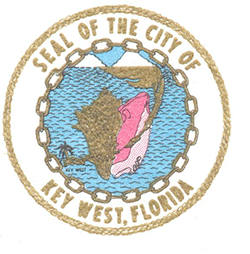 When a street sweeper is replaced by an organization, the question often arises about what to do with the old one. Many municipalities dispose of their old equipment, including sweepers, via public auction or, more recently, via listing at one of the internet auction sites that have sprung up in recent years.
When a street sweeper is replaced by an organization, the question often arises about what to do with the old one. Many municipalities dispose of their old equipment, including sweepers, via public auction or, more recently, via listing at one of the internet auction sites that have sprung up in recent years.
However, when city officials in Key West, Florida, bought a 2014 Johnston VT 651, they decided gifting it to the Bahamas Harbour Island, an island with 2,000 residents. Although all agreed it was the best use for the city's decommissioned sweeper, it was important to complete the transaction without actually costing the taxpayers any money. Fortunately, Arnold's Towing, which has the city contract for towing, volunteered to haul the sweeper up to the port at Fort Lauderdale, an expense that would otherwise have run around $1,800.
Read the article in the Florida Keys News.
Ways to Eliminate Drag Shoe Scraping
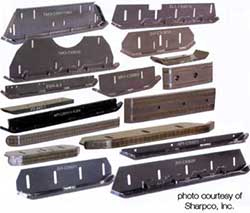
Most of the time, drag shoes will not leave marks on pavement. However, especially when a parking lot has just been re-sealed, a sweeper's drag shoes can leave marks wherever the sweeper has traveled. Although these quickly fade in most all instances, the marks can raise the ire of property managers proud of their newly sealcoated lot. The information in this article is designed to help you decide what to do in those instances where the lot needs to be left mark-free.
The idea for the article came from James Sharplin, owner of Sharpco, which makes and sells sweeper drag shoes to contractors and municipalities throughout the U.S. Sharpco is also the OEM drag shoe supplier for several sweeper manufacturers. In addition to his ideas and comments, several long-time contractors weigh in on their solutions for minimizing and/or eliminating drag shoe scraping.
Check out the info.
Featured Contractor: California's CAM Services has Developed a Client Base of 'Raving Fans'
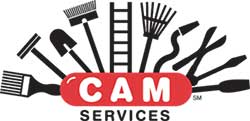
CAM Services is a California-based company that was started in 1987 by Jim Swindle, now the company's CEO. He began with six employees, two trucks and a vision of providing honest, professional property maintenance services to Southern California's commercial real estate market. Swindle, who was a writer, was approached by a property manager looking for a 'one call does it all' solution. Part of what he offered Swindle was an in-house office he could also use for his writing.
In terms of size and scope, CAM Services now has 550 sweeping clients and about 1900 unique service contracts that service over 1300 properties in their 14-county region. These are served from a total of five offices, each of which is staffed by people local to each of the office's locations. Although the firm started out as a local operation, over the last 27 years it has been morphed into a property maintenance firm with literally billions of dollars of assets under its care.
We strongly recommend that any contractor wanting to expand their market share, especially in regard to building a full-service sweeping and exterior maintenance company, invest the time to both read the article and listen to the 45-minute audio podcast linked at the bottom of the story.
Go there.
New Macedonian-Built Air Sweeper Produced for Export Via Brako/BioStrada Partnership
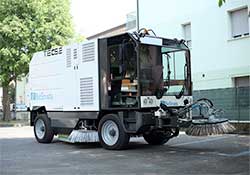
The Veles, Macedonia-based company "Brako" has started manufacturing trucks for vacuum street sweeping as a result of a joint partnership with Italy's "BioStrada" company. The mechanical street sweeper is an environmentally-friendly vehicle, entirely manufactured in Brako's plants.
Macedonia (officially the Republic of Macedonia) is a country located in the central Balkan peninsula in Southeast Europe. BioStrada and Brako's successful joint project is the first of its kind in Macedonia in which a local and foreign company are investing in a product intended to be exported and whose added value to a large extent belongs to Macedonia. The first road sweepers will be exported on markets in Qatar and Italy. The vehicle has the capacity to sweep over 70,000 square meters per hour and offers advanced environmental performance.
Read all about it.
Unique 'Double Main Broom' Concept Designed in Germany, Licensed to China
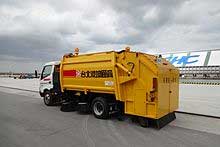 In our ongoing series showcasing sweeper technology from around the world we bring you information about the 'double main broom' sweepers now in use in Asia. Sweeper manufacturers in the Asia region are intentionally using some less sophisticated mechanical and regenerative air sweepers, ones that differ significantly in design to the American and European sweepers.
In our ongoing series showcasing sweeper technology from around the world we bring you information about the 'double main broom' sweepers now in use in Asia. Sweeper manufacturers in the Asia region are intentionally using some less sophisticated mechanical and regenerative air sweepers, ones that differ significantly in design to the American and European sweepers.
For example, China and Taiwan have both adapted the mechanical sweeper design of using two main brooms mounted vertically at the back of the hopper to carry debris into hopper. This design is seen as being less complicated and more cost-effective than the mechanical conveyor belt and broom setup more well known in the U.S. and Europe.
We invite you to learn more about this particular sweeper design; where it originated and how it works. The machines are a credit to human ingenuity and a testament to finding ways to build a better mousetrap, er, sweeper.
Read all about these unique machines.
Street Cleaners in New York Have Help From Insect Garbage-Munchers

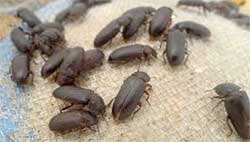 Think street sweepers are alone in their task of cleaning up the streets of New York? If so, think again. How's this for statistics: According to new research, urban-dwelling bugs – millipedes, ants, spiders and cockroaches – roaming a 150-block stretch of the Broadway/West Street corridor consume the equivalent of 60,000 hotdogs each year.
Think street sweepers are alone in their task of cleaning up the streets of New York? If so, think again. How's this for statistics: According to new research, urban-dwelling bugs – millipedes, ants, spiders and cockroaches – roaming a 150-block stretch of the Broadway/West Street corridor consume the equivalent of 60,000 hotdogs each year.
Although arthropods consumed only a few grams of food at each site, the researcher's calculations, which are part of an article featured on National Geographic's website, show that these amounts can add up over time. "If insects weren't eating all of this food, it would accumulate and be foul," said study leader Elsa Youngsteadt, an entomologist at North Carolina State University in Raleigh.
Click to read the National Geographic article.
|
